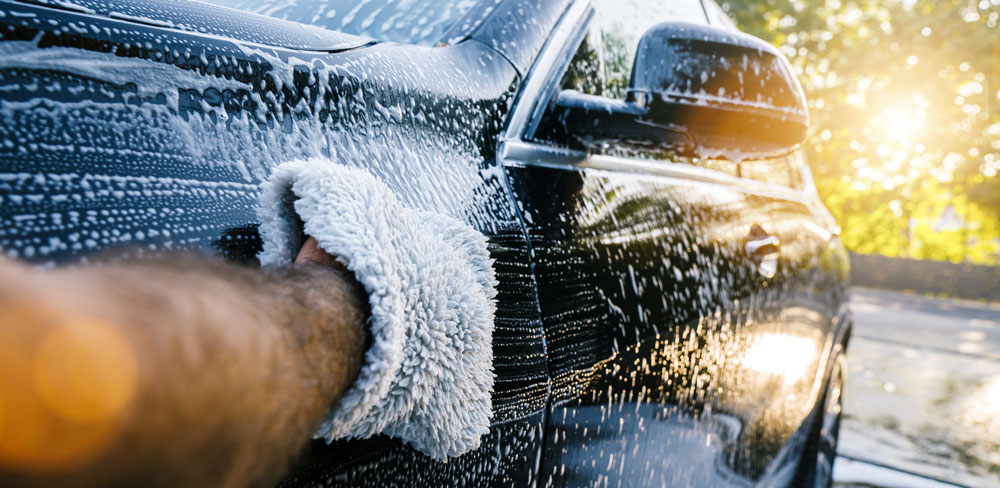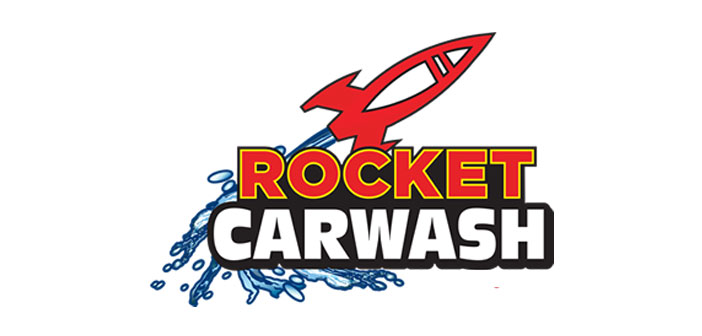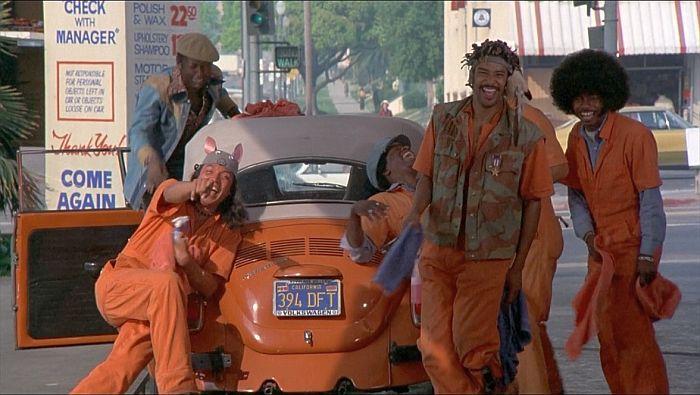
Maintaining a clean car is about more than just aesthetics; it’s about preserving its value and protecting its finish. Road grime, salt, bird droppings, and even sunlight can take a toll on your vehicle’s paint over time. Regular washing removes these harmful contaminants, preventing corrosion and keeping your car looking its best. A clean car is also a safer car. Clean windows and mirrors provide better visibility, ensuring you can see clearly in all conditions. Clear headlights shine brighter, improving your ability to see and be seen at night. Plus, who doesn’t enjoy driving a sparkling clean car? It simply feels good!
The feeling of pride and accomplishment that comes with a freshly washed car is something many car owners cherish. It’s a tangible way to show that you care about your vehicle. Furthermore, regular car washing can actually save you money in the long run. By preventing rust and corrosion, you’re less likely to face costly repairs down the road. Taking the time to wash your car yourself can also be a relaxing and therapeutic experience. It’s a chance to disconnect from the stresses of daily life and focus on a simple, rewarding task.
But how often should you wash your car? That depends on a variety of factors, including your location, the time of year, and how often you drive. Someone who lives in a snowy climate and drives daily will need to wash their car more frequently than someone who lives in a dry climate and only drives occasionally. Ignoring the need to wash your car can lead to damage and depreciation.
Ultimately, the goal is to find a balance that works for you and your car. It’s about finding the sweet spot where your car stays clean and protected without requiring excessive effort or expense. So, let’s delve into the details of **How to Wash a Car | Car Wash Frequency** and discover the best practices for keeping your ride looking its best. We’ll also explore the ideal **How to Wash a Car | Car Wash Frequency** based on your individual needs and circumstances.
So, let’s embark on a journey to understand **How to Wash a Car | Car Wash Frequency**, ensuring your vehicle remains a source of pride and a reliable companion for years to come.
Gathering Your Supplies: Setting Yourself Up for Success
Choosing the Right Soap
The first step in any successful car wash is selecting the right soap. Don’t be tempted to use dish soap or household cleaners, as these can strip away wax and damage your car’s paint. Instead, opt for a car wash soap specifically formulated for automotive finishes. These soaps are pH-balanced and designed to gently lift dirt and grime without harming the paint.
Look for car wash soaps that are labeled as “wax-safe” if you want to preserve your existing wax coating. Some soaps even contain wax additives that can help enhance your car’s shine and protect it from the elements.
Consider the type of soap you prefer. Some soaps are concentrated and need to be diluted with water, while others are ready-to-use. Concentrated soaps are generally more economical, but require careful measuring to avoid using too much or too little.
Read reviews and compare different brands to find a car wash soap that meets your needs and budget. Experiment with different options to see which one you like best.
Avoid soaps that contain harsh chemicals or abrasives, as these can scratch or dull your car’s paint. A gentle, pH-balanced soap is always the best choice.
Essential Tools and Equipment
Beyond soap, you’ll need a few essential tools to wash your car effectively. A good quality wash mitt is crucial for safely removing dirt and grime without scratching the paint. Opt for a microfiber mitt, as these are soft, absorbent, and less likely to cause damage than sponges or brushes.
You’ll also need two buckets: one for soapy water and one for rinsing your mitt. This “two-bucket method” helps prevent dirt from being transferred back onto your car’s paint.
A garden hose with a spray nozzle is essential for rinsing your car before and after washing. Choose a nozzle with adjustable spray patterns to control the water pressure.
Microfiber towels are ideal for drying your car, as they are soft, absorbent, and lint-free. Avoid using old bath towels, as these can scratch the paint.
Optional but helpful tools include a wheel brush for cleaning your wheels and tires, a glass cleaner for cleaning your windows, and a clay bar for removing stubborn contaminants.
Protecting Yourself and the Environment
Before you start washing your car, take a few precautions to protect yourself and the environment. Wear gloves to protect your hands from soap and water. Choose a shady spot to wash your car to prevent the soap from drying too quickly.
Be mindful of water usage. Avoid leaving the hose running unnecessarily. Consider using a water-saving nozzle or washing your car at a commercial car wash that recycles water.
Dispose of soapy water properly. Avoid dumping it down storm drains, as this can pollute waterways. Instead, dispose of it in a grassy area where it can be absorbed by the soil.
Use biodegradable car wash soap whenever possible to minimize your environmental impact.
By taking these simple steps, you can wash your car safely and responsibly.
The Washing Process: Step-by-Step Guide
Pre-Rinse: Preparing the Surface
Before you start washing, thoroughly rinse your car with water to remove loose dirt and debris. This will help prevent scratching during the washing process.
Use a spray nozzle with a wide spray pattern to cover the entire car. Pay special attention to areas that tend to accumulate dirt, such as the wheel wells and rocker panels.
Rinse from top to bottom, allowing the water to carry away the dirt and grime. Don’t forget to rinse the wheels and tires as well.
If your car is heavily soiled, you may need to repeat the pre-rinse to remove as much dirt as possible.
A thorough pre-rinse is essential for a safe and effective car wash.
Washing: The Two-Bucket Method
Fill one bucket with car wash soap and water, following the manufacturer’s instructions. Fill the other bucket with clean water for rinsing your mitt.
Dip your wash mitt into the soapy water and wring out any excess. Gently wash your car, starting from the top and working your way down. Use straight, overlapping strokes to avoid swirl marks.
After washing a section of the car, rinse your mitt thoroughly in the clean water bucket to remove any dirt or debris. This will prevent you from transferring dirt back onto the car’s paint.
Repeat the process, washing and rinsing each section of the car until it is completely clean.
The two-bucket method is a simple but effective way to minimize scratching and protect your car’s paint.
Rinsing: Removing the Soap
Once you’ve washed the entire car, thoroughly rinse it with clean water to remove all traces of soap. Use a spray nozzle with a wide spray pattern to ensure that all the soap is rinsed away.
Rinse from top to bottom, allowing the water to carry away the soap and grime. Pay special attention to crevices and hard-to-reach areas where soap can accumulate.
If you notice any soap residue, rinse the area again until it is completely clean.
A thorough rinse is essential for preventing water spots and ensuring a streak-free finish.
Take your time and make sure you’ve rinsed every inch of the car.
Drying: Preventing Water Spots
The Importance of Quick Drying
Drying your car quickly is essential for preventing water spots, which are caused by mineral deposits left behind when water evaporates. Water spots can be difficult to remove and can detract from your car’s appearance.
The faster you dry your car, the less likely you are to develop water spots.
Choose a drying method that is effective and efficient.
Consider the weather conditions. On a hot, sunny day, you’ll need to dry your car even more quickly to prevent water spots.
Don’t neglect the drying process. It’s just as important as washing and rinsing.
Microfiber Towels: The Preferred Method
Microfiber towels are the preferred method for drying cars, as they are soft, absorbent, and lint-free. They are less likely to scratch the paint than other types of towels.
Use a large, waffle-weave microfiber towel for the main surfaces of the car. These towels are designed to absorb a large amount of water quickly.
Use smaller microfiber towels for drying crevices and hard-to-reach areas.
Fold the towel into quarters to create multiple clean surfaces. As one surface becomes saturated, flip the towel to a dry surface.
Gently pat or blot the water off the car, rather than dragging the towel across the surface. This will minimize the risk of scratching.
Alternative Drying Methods
If you don’t have microfiber towels, you can use a chamois cloth to dry your car. Chamois cloths are also absorbent and lint-free, but they require more maintenance than microfiber towels.
Another option is to use a leaf blower to blow the water off the car. This method is quick and effective, but it can be noisy and may not be suitable for all environments.
Some car washes offer a “spot-free rinse” option, which uses deionized water to minimize water spots. This can be a convenient option if you don’t have time to dry your car yourself.
Experiment with different drying methods to see which one works best for you.
Remember, the key is to dry your car quickly and thoroughly to prevent water spots.
Detailing: Taking It to the Next Level
Wheel and Tire Cleaning
Cleaning your wheels and tires is an important part of car detailing. Brake dust, road grime, and tire shine can accumulate on your wheels and tires, making them look dull and dirty.
Use a wheel cleaner specifically formulated for your type of wheels. Some wheel cleaners are designed for alloy wheels, while others are designed for chrome wheels.
Spray the wheel cleaner onto your wheels and let it sit for a few minutes to loosen the dirt and grime. Use a wheel brush to scrub the wheels thoroughly.
Rinse the wheels with water and dry them with a microfiber towel.
Apply tire shine to your tires to give them a glossy, black look.
Window Cleaning
Clean windows are essential for safe driving. Dirty windows can reduce visibility and make it difficult to see clearly in all conditions.
Use a glass cleaner specifically formulated for automotive windows. Avoid using household cleaners, as these can leave streaks and residue.
Spray the glass cleaner onto your windows and wipe them clean with a microfiber towel. Use a separate towel for the interior and exterior windows.
Pay special attention to the corners and edges of the windows, where dirt and grime tend to accumulate.
Clean your windows regularly to maintain optimal visibility.
Waxing and Polishing
Waxing and polishing can help protect your car’s paint and enhance its shine. Wax creates a protective layer that shields the paint from the elements, while polishing removes swirl marks and imperfections.
Before waxing or polishing, make sure your car is clean and dry. Use a clay bar to remove any stubborn contaminants from the paint.
Apply a thin layer of wax or polish to the paint using a microfiber applicator pad. Use circular motions to work the product into the paint.
Let the wax or polish dry according to the manufacturer’s instructions. Buff the paint with a clean microfiber towel to remove the excess product.
Waxing and polishing can significantly improve the appearance of your car.
Car Wash Frequency: Finding the Right Balance
Factors Influencing Wash Frequency
Several factors influence how often you should wash your car. Your location, the time of year, and how often you drive all play a role.
If you live in a snowy climate, you’ll need to wash your car more frequently to remove salt and road grime. Salt can cause corrosion and damage your car’s paint.
If you live in a dry climate, you may not need to wash your car as often. However, you should still wash it regularly to remove dust and dirt.
If you drive frequently, your car will accumulate dirt and grime more quickly. You’ll need to wash it more often than someone who only drives occasionally.
Consider your individual needs and circumstances when determining your car wash frequency.
General Guidelines for Wash Frequency
As a general guideline, you should wash your car every two weeks. This will help keep it clean and protected from the elements.
If you live in a snowy or dusty climate, you may need to wash your car more often.
If you only drive occasionally, you may be able to wash your car less often.
Pay attention to your car’s appearance. If it looks dirty, it’s time for a wash.
Don’t wait until your car is covered in dirt and grime to wash it. Regular washing is easier and more effective than trying to remove heavy buildup.
The Benefits of Regular Washing
Regular washing helps protect your car’s paint from damage caused by dirt, salt, and other contaminants.
It also helps prevent rust and corrosion, which can extend the life of your car.
A clean car looks better and is more enjoyable to drive.
Regular washing can also improve your car’s resale value.
Taking care of your car is an investment that will pay off in the long run. By following the **How to Wash a Car | Car Wash Frequency** guide, you can keep your car looking its best and protect its value.
Alternative Washing Options: Professional vs. DIY
The Convenience of Professional Car Washes
Professional car washes offer a convenient way to keep your car clean without the hassle of doing it yourself. They are equipped with specialized equipment and trained staff to wash your car quickly and efficiently.
There are two main types of professional car washes: automatic car washes and hand car washes.
Automatic car washes use automated equipment to wash your car, while hand car washes use manual labor to wash your car by hand.
Automatic car washes are generally faster and cheaper than hand car washes, but they can sometimes be harsh on your car’s paint.
Hand car washes are generally more gentle on your car’s paint, but they are more expensive and time-consuming.
The Cost-Effectiveness of DIY Car Washing
Washing your car yourself can be a cost-effective alternative to professional car washes. You can save money on labor costs and use your own preferred products.
DIY car washing also gives you more control over the process. You can choose the soap, towels, and other supplies that you want to use.
However, DIY car washing requires more time and effort than professional car washing.
You’ll need to gather your supplies, set up your washing area, and spend time washing and drying your car.
Consider your budget, time constraints, and personal preferences when deciding whether to wash your car yourself or take it to a professional car wash.
Weighing the Pros and Cons
Ultimately, the best washing option for you depends on your individual needs and circumstances. If you’re short on time and don’t mind spending a little extra money, a professional car wash may be the best choice.
If you’re on a budget and enjoy taking care of your car yourself, DIY car washing may be a better option.
Consider the pros and cons of each option before making a decision.
No matter which option you choose, regular car washing is essential for protecting your car’s paint and maintaining its appearance.
Remember to follow the **How to Wash a Car | Car Wash Frequency** guidelines to keep your car looking its best.
Conclusion: Keep Your Car Sparkling!
Keeping your car clean doesn’t have to be a chore. With the right tools, techniques, and understanding of **How to Wash a Car | Car Wash Frequency**, you can easily maintain a sparkling clean vehicle. Whether you choose the convenience of a professional car wash or the satisfaction of a DIY detail, the key is consistency. Regular washing not only enhances your car’s appearance but also protects its value and longevity.
We’ve covered everything from gathering supplies to mastering the two-bucket method, drying techniques, and the importance of regular washing. Remember to adjust your washing frequency based on your location and driving habits. By following these guidelines, you can ensure your car always looks its best.
Don’t forget to explore other articles on our site for more tips and tricks on car care and maintenance. From detailing secrets to choosing the right products, we have a wealth of information to help you keep your car in top condition.
Happy washing, and we hope your car stays shiny and new for years to come!
Check out our other articles on car detailing, maintenance tips, and product reviews to further enhance your car care knowledge!
- Gather your supplies: soap, buckets, mitts, and towels.
- Pre-rinse your car to remove loose dirt.
- Wash your car using the two-bucket method.
- Rinse thoroughly to remove all soap residue.
- Dry your car with microfiber towels to prevent water spots.
- Detail your car by cleaning wheels, tires, and windows.
- Determine your car wash frequency based on your location and driving habits.



